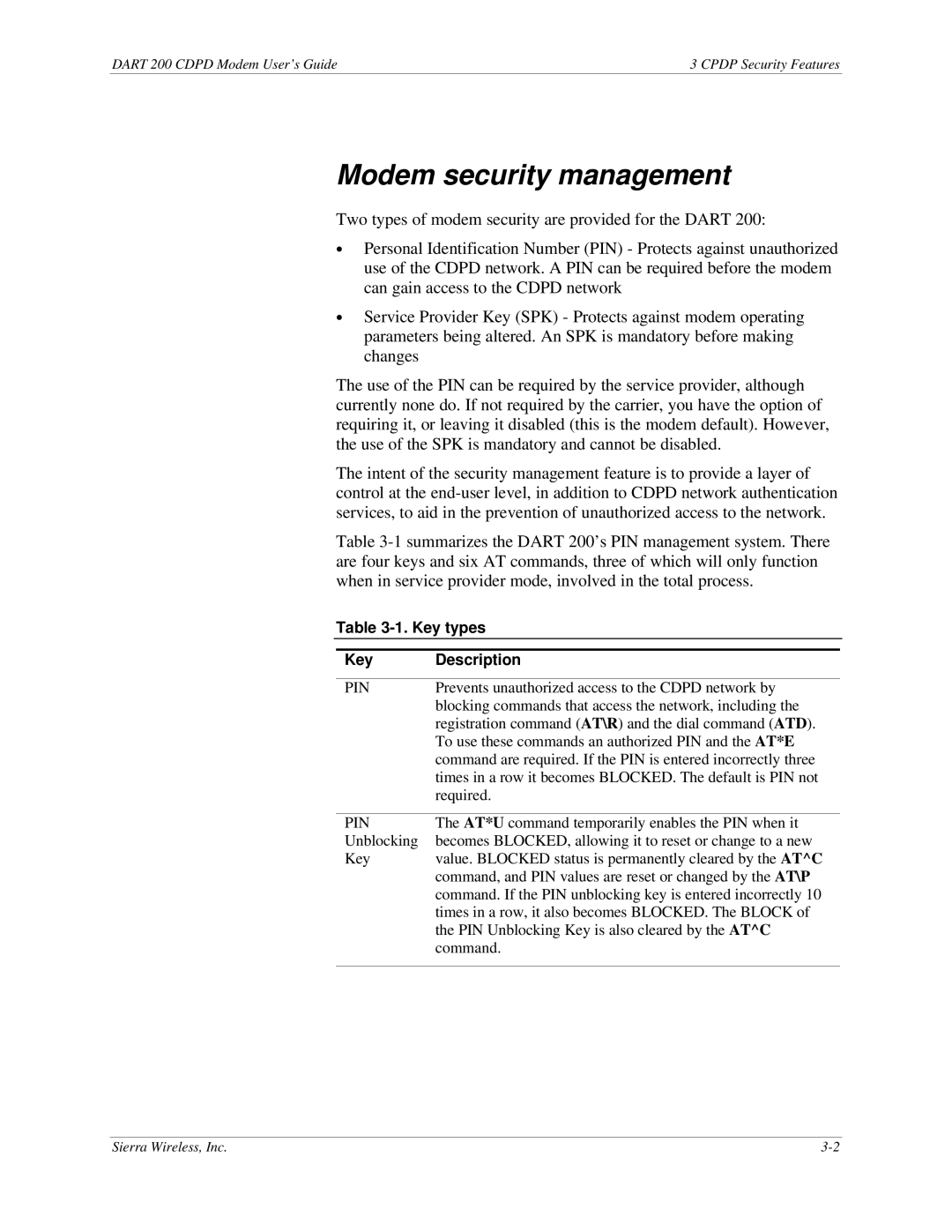
DART 200 CDPD Modem User’s Guide | 3 CPDP Security Features |
Modem security management
Two types of modem security are provided for the DART 200:
∙Personal Identification Number (PIN) - Protects against unauthorized use of the CDPD network. A PIN can be required before the modem can gain access to the CDPD network
∙Service Provider Key (SPK) - Protects against modem operating parameters being altered. An SPK is mandatory before making changes
The use of the PIN can be required by the service provider, although currently none do. If not required by the carrier, you have the option of requiring it, or leaving it disabled (this is the modem default). However, the use of the SPK is mandatory and cannot be disabled.
The intent of the security management feature is to provide a layer of control at the
Table
Table 3-1. Key types
Key | Description |
|
|
PIN | Prevents unauthorized access to the CDPD network by |
| blocking commands that access the network, including the |
| registration command (AT\R) and the dial command (ATD). |
| To use these commands an authorized PIN and the AT*E |
| command are required. If the PIN is entered incorrectly three |
| times in a row it becomes BLOCKED. The default is PIN not |
| required. |
|
|
PIN | The AT*U command temporarily enables the PIN when it |
Unblocking | becomes BLOCKED, allowing it to reset or change to a new |
Key | value. BLOCKED status is permanently cleared by the AT^C |
| command, and PIN values are reset or changed by the AT\P |
| command. If the PIN unblocking key is entered incorrectly 10 |
| times in a row, it also becomes BLOCKED. The BLOCK of |
| the PIN Unblocking Key is also cleared by the AT^C |
| command. |
|
|
Sierra Wireless, Inc. |
